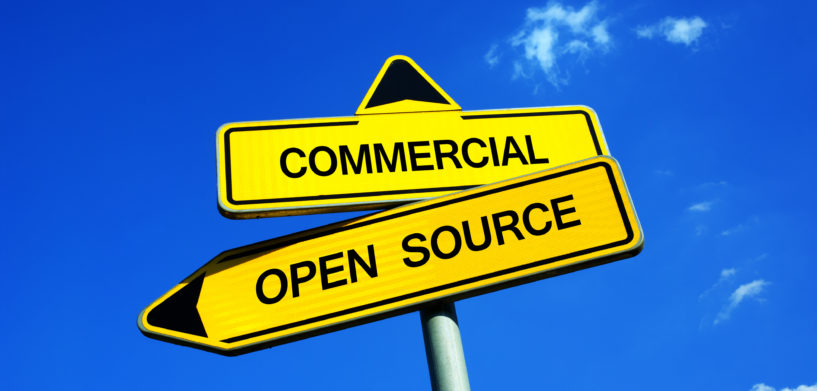You might be asking yourself why to pay for airborne imagery when you can get it for free. Although open-source solutions have matured and offer certain benefits, they also come with their costs and setbacks such as limited support, scalability, unlimited storage, backup, and most likely will require extra work to integrate and maintain the solution.
Granted, huge annual subscriptions or pricey licensing fees can discourage anyone looking for an online service. Open-source solutions offer up-front cost savings, however, down the road users may incur in spending money for other subscription services, such as a cloud service for storage.
Companies may also consider open-source imagery providers to keep their options open. Open-source solutions, however, usually require customisation, configuration, and provide limited to no support.
Another way for airborne imagery
For users that want to keep their options open and not spend a fortune, the HxGN Content Program offers the choice of downloading the data off-the-shelf or for streaming directly from the cloud into third party software, such as ArcGIS and AutoCAD. The streaming service ensures that you always have access to the latest imagery .
The HxGN Content Program has also tailored solutions for those who need immediate pricing and easy payment with credit card. The Program offers a practical online shop where data can be easily and quickly purchased by credit card according to the desired specifications and with a detailed set of metadata at a minimum order of only $65.00.
When choosing a digital airborne imagery provider, pricing should be one of many other elements to consider. According to the 10 Year Forecast and Survey conducted by the American Society for Photogrammetry and Remote Sensing, orthoimagery was listed as the most important geospatial data layer for a geographic information system (GIS). Elevation and Base Map followed as the second and third most important layers in the survey results. Does the option that you have in mind cover all the data layers that you need?
Orthorectified aerial imagery means pixels were corrected according to surveyed ground control points to ensure images are in the accurate position (x,y). Accurately referenced images, or orthorectified images, are needed to produce accurate base maps. The HxGN Content Program offers immediate access to aerial data that has been processed and checked by experienced photogrammetry experts (orthorectified) and has been acquired state-wide in the same season with the latest airborne mapping technology on a planned refresh cycle.
Before jumping straight into an open-source imagery service, you need to understand limitations, image quality, and licensing agreements among other aspects. Here is a checklist of questions you should ask before selecting a digital airborne imagery service :
- Accuracy and quality: What is the level of standardisation that you need? Do you need a service provider that has gone through rigorous QC? Do you need rectified imagery or orthophotography that meets high accuracy levels? What positional accuracy and image resolution do you need?
- Image specifications: What image specifications do you or your client need? Do you need imagery that comes with metadata for positional accuracy and is it accessible to users? Do you need to identify smaller objects? What vectors and features do you need your data to come with? Do you need multispectral imagery?
- Ownership: Do you need to own all resulting work and deliverables? What are the licencing restrictions? Do you need imagery that comes in compatible formats? Can derivative products be made out of your imagery?
- Authenticity: Do you need a certification or warranty that your imagery was processed by a professional? Do you want a provider that ensures services and deliverables meet certain specifications and standards?
- Acquisition and technology: Does the acquisition method of imagery meet high standards? Do you need imagery that was captured with the best-in-class capture technology?
- Access and refresh: How often do you need your imagery to be updated? At what time of the year and under what weather conditions do you need imagery to be captured? Do you need cloud-free imagery? Do you need online immediate access to the imagery ?
- Finally, you should ask yourself if the data you will use is going to provide the roadmap to make crucial decisions that will impact the lives and safety of others. If that is the case, the answer is clear – you need to use authoritative aerial imagery.
While many imagery services are great references and visualisation tools, they should not be confused with authoritative orthoimagery datasets processed by experienced photogrammetry experts and delivered through a licensed and off-the-shelf process. Before selecting an imagery service that provides content “for free” be aware that service providers like the HxGN Content Program offer flexible pricing models for different needs and offer large savings when compared to custom acquisition.
Click here to sign up for a 15 day free trial to access the HxGN Content Program streaming service.
Bruce Wald is the chief operating officer for the Hexagon Geosystems Content & Engineering Services Division















